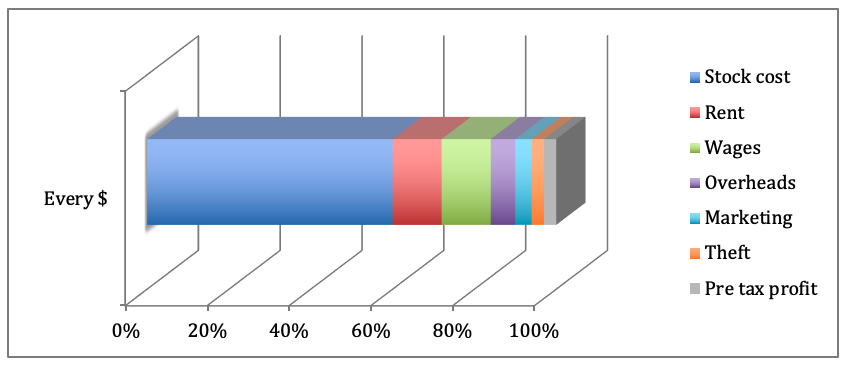Analysing gross profit by floor space allocation should be done at least annually in every retail business in our view. This is based on decades of service by Tower Systems in our work with our POS software in thousands of local retail businesses.
With retail space usually costing between 11% and 15% of revenue in many retail settings, it is usually the next highest cost outside of the cost of stock itself.
Spend half an hour on what we suggest here and the result could provide clarity on immediate steps you can take in your business to improve what you make.
This is not advice you will get from your accountant or from reviewing your P&L or computer reports. It is designed to be practically helpful in managing your business.
Please follow these simple steps.
- Take a blank sheet of paper, ideally A3, and roughly sketch out the layout of your shop, marking in display units, wall shelving, the counter – everywhere you have product.
- The floor plan layout should also include your back room if you have stock there.
- Colour-shade the layout by department. For example, shade all areas with magazines in yellow, all floor space for gifts in blue etc.
- List the departments on the side of the floor plan.
- Calculate the percentage of total space taken by each department. This does not need to be accurate to two decimal places. List this next to each department you have listed.
- Use your POS software to report on gross profit dollars earned by each department over the last year.
- Calculate the percentage of total gross profit contribution earned by each department as shown by the POS software and list this next to the floor space allocated to each department – on the floor plan map you have done.
- Circle in green those performing the best and in red those performing the worst. A best performing department will typically be responsible for a significantly higher percentage of gross profit than percentage of space allocated whereas a worst performing department will be contributing a percentage of overall gross profit considerably lower than the percentage of floor space allocated.
Once you have the marked-up floor plan with the space percentage and percentage of total gross profit, think about your floor space allocation.
The above steps do not take into account product size and the average gross profit percentage from each dollar of revenue for a department. For example, ink is a lower margin product than stationery, gifts are a higher margin magazines. Typically, the analysis will highlight challenges with lower margin product.
Here are actions the work you do could lead to:
- Changing the location of a department within the business.
- Increasing floor space for a department.
- Decreasing floor space for a department.
- Working on improving the GP achieved for a department through better buying.
- Working in increasing sales for a department to lift the overall GP dollar contribution achieved.
You can take the analysis a step further by looking only at one department and analysing performance by category, using the method outlined above.
For example, in one business we saw a category taking 7% of department space while they contributed more than 40% of gross profit earned from all in the department. It’s this data where good POS software can provide insights.
The type of analysis we are suggesting here is intended to give you a fresh view of your business as you engage in the process of constant change.
Tower Systems is grateful to serve local retailers with POS software, which is backed by everyday retail management advice.,



Recent Comments